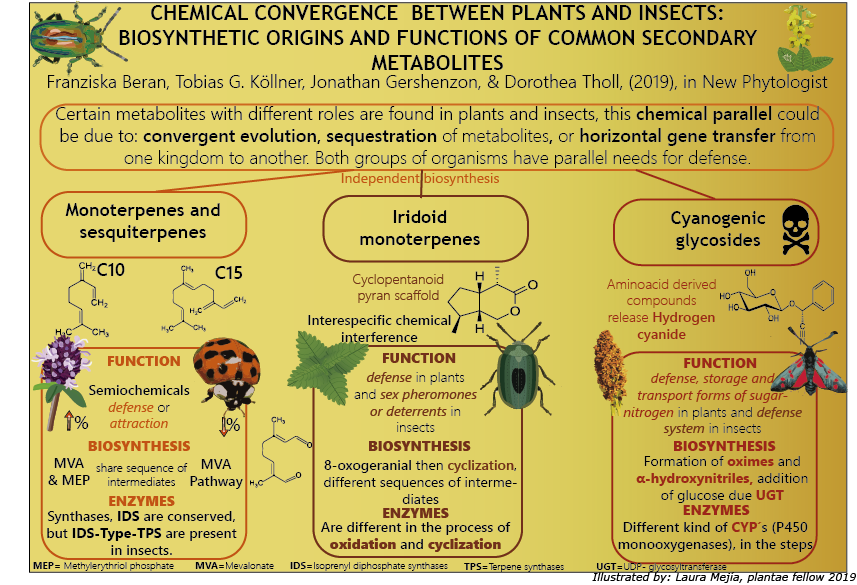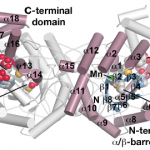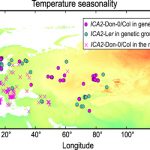Chemical convergence between plants and insects: biosynthetic origins and functions of common secondary metabolites

Plants and insects aren’t closely related, but the have indeed a plethora of similar chemical weapons used for their interactions (defense, attraction, etc). In this article Beran, et al, shows the different metabolites that are shared in both groups, in insects and plants. 1.The monoterpenes and sesquiterpenes used for inter and intraespecific interactions, this molecules are formed through the mevalonate pathway (MVA) that is conserved, but in plants has also the methylerythriol pathway (MEP), which uses isopentenyl diphosphate, in both groups the enzymes used are different. 2. The iridioids, molecules used in plants for defensive purposes, and in insects as sex pheromones, this molecules are produced similarly in both groups, but with different steps and intermediates, with the same pathway of the monoterpenes and sesquiterpenes, with a process of cyclization to form the cyclopentanoid pyran scafold. 3. Cyanogenic gycosides, this molecules are used as defense compounds due to their toxicity, the biosynthetic pathway starts with an aliphatic or aromatic aminoacid that due to the CYP´s enzymes formes oximes, then is formed the stable form of a cyanohydrin with a glucose. the principal hypothesis for the origin of this molecules in both groups is related to convergent evolution, horizontal gene transfer, which is associated to parallel needs for defense chemicals.



